Written by Ninja IX
Located on the northern
bank of the Lachine canal in the former industrial heart of St. Henri
in Montreal stands the historical Canada Malting Complex. In 1902 the
Canada Malting Company Limited was established and in 1904 they
constructed this building, which at the time was the largest modern malt-house in North America. The location of the building on the canal
was imperative as the barley shipped from the prairies to the port of
Montreal was then transported by barge to the plant.
Malting is the process
of sorting, cleaning, and germinating grains by soaking them,
followed by kiln drying which halts the germination process. Starches
are converted to sugars and the malted grain can then be used to make
beer and other products. Although most of the equipment has been
removed, all of these steps once took place on site. Barley was
transported from barges to the 'work houses' located at the top of
the silos using conveyor belts. The grain was poured into small holes
using hoppers and was stored until it could be malted and then
distributed to the local breweries.iPhone maps aerial screenshot

Designed by David
Jerome Spence, this building has many interesting architectural
features including the use of terra cotta tiles which were hollow
and made of baked clay which surrounded the original nine silos. The tiles
were light and helped to reduce the risk of fire and were also
insulating to hot and cold. The building was also equipped with a
'Humphrey Man Lift,' an elevating system for workers which was fast,
efficient, and occupied only a small space.
In the 1940s the plant
was expanded and new concrete silos were constructed. In the 1960s a receiving plant was built at the port of Montreal for grain storage. In the
1970s the closing of the Lachine canal began the demise of Canada
Malt as an active building. Grains were subsequently transported by
train, however this method was expensive and inefficient. The plant
became technologically outdated and unable to keep up with demand and closed
in the early 1980s, relocating its operation to
the port of Montreal. The building was sold to Quonta Holding Ltd. for $500,000 and
used for soya and corn storage until the discontinuation of the CN
rail line to the area and by the late 1980s, the building was abandoned.
The photo above, taken by Spek of explorationurbaine.ca in 1996, captured the first large piece of graffiti on the building. SAIKO painted his name atop of
the exterior, sparking a procession of visitors that continues to
this day. SAIKO began the love affair of urban explorers, graffiti artists, vandals and locals with
this historical site which has been crumbling into ruin even since.
Much like the grains that transformed through the germination process,
this building has seen its own transformation over the years and now
sits in a state of disrepair and decay.
On a cold day in
February of 2013, Jerm and I met with fellow explorer Nel58 and set
our sights on Malt. Gaining entry is always
a creative endeavour and this day was no exception. Nel58 is no
stranger to Malt, she has explored it extensively over the years and
knows the ins and outs of the building. She recounted the ongoing
“friendly war” with the welder who is responsible for sealing up
entry ways that continue to disappear and reappear at a fast rate.
The ad hoc nature of these repairs cannot be understated. The effect
is one of unintentional artistic expression.
On this day we won the
war.
We wiggled up into a
silo and perched on some wooden planks installed by previous
explorers for comfort and utility due to the funnelling effect. Our
whispers were magnified into gargantuan echoes bouncing off the high
cement walls which sparkled under the rays of our flash lights. A hole
at the very top where hoppers once poured grain into the silo, let in
a minute amount of light which illuminated the expansiveness of the
space.
Crawling, ducking,
squeezing, descending.
Illuminating darkness, treading carefully.
Gripping, climbing,
pulling, emerging.
Emerging and rising to
our feet in the inner courtyard of the complex. This was an exciting
and triumphant moment.
We could not have asked
for a more experienced guide than Nel58, who seemed to know every
square inch of the complex and seamlessly navigated us through the labyrinth of rooms, warning us of every potential hazard.
Our exploration took us
in an upward trajectory which became progressively hazardous.
Missing, broken and half stairs and rotting floors required extreme
caution and an acute awareness of one's surroundings and position in
space. We looked back over the terrain we had succeeded in climbing
like proud mountaineers. A raccoon walked by nonchalantly, seemingly
unaware of the danger of this perilous environment.
Into darkness, we ascended a
narrow spiral staircase that came to an abrupt end. We
then continued upward using stairs and ladders until we reached the
most ominous makeshift ladder that would make any adventurous explorer squirm: it
was evidently made of three different metal ladders which had been
welded together. The incline was steep and it hung over a dark
abyss. At the base of the ladder, a tenuous glance upward revealed
circles cut from the floors, this must have once been the site of the
Humphrey Man elevator, we agreed. With Nel58 leading the way without
so much as a flinch, a deep breath was taken and one careful step
followed the next. Emerging from the first circular cut out, the
perilous ascent was rewarded upon entering the workhouses at the top
of the silos. Like tongues, long conveyor belts run along the length of the room, from the mouths of
machines. Nel58 warned of the many holes where grains once poured
into the tops of the silos. She shined her light into the silo we had
previously climbed into, revealing the wooden planks deep within. We
took the final ascent up a series of catwalks until we reached what
felt like the top of the world. We looked out over the city of
Montreal, and the old Canada Malt plant, in all its crumbing glory.
Special thanks to our friend and guide Nel58.
Geo Klein Boat Co. and Incinérateur Dickson were also explored on this trip.

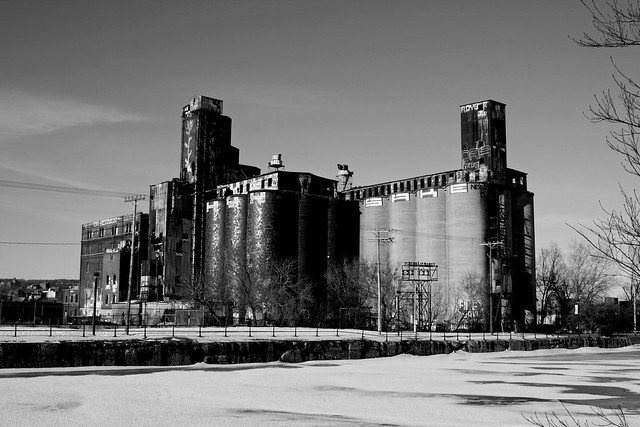
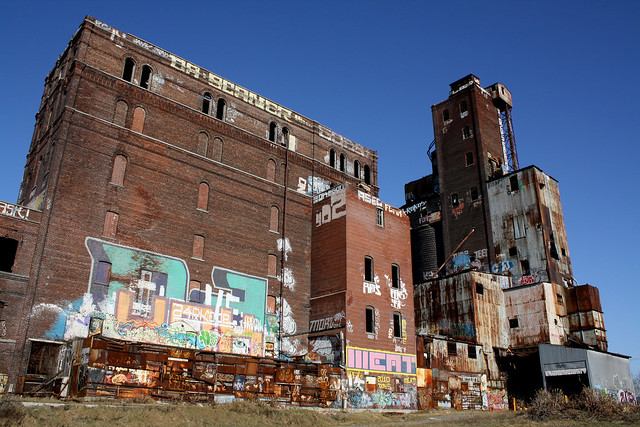
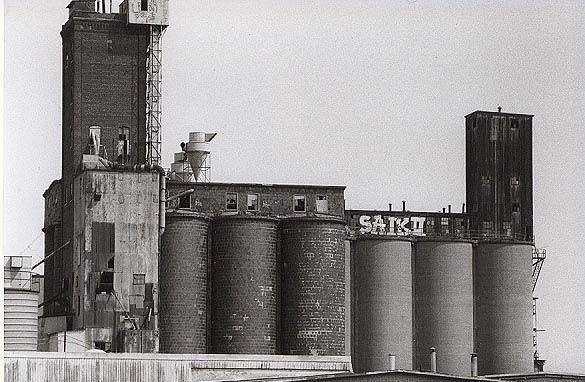
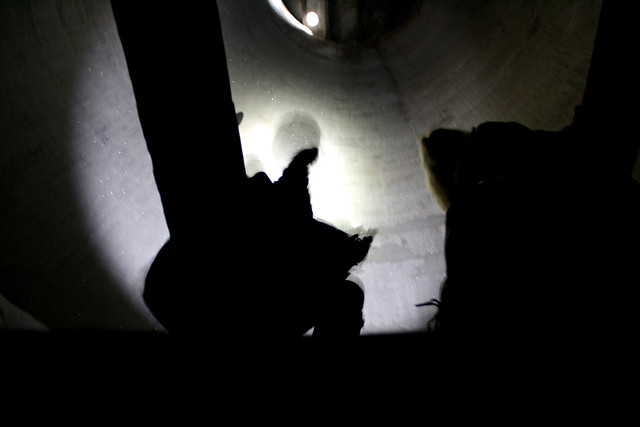






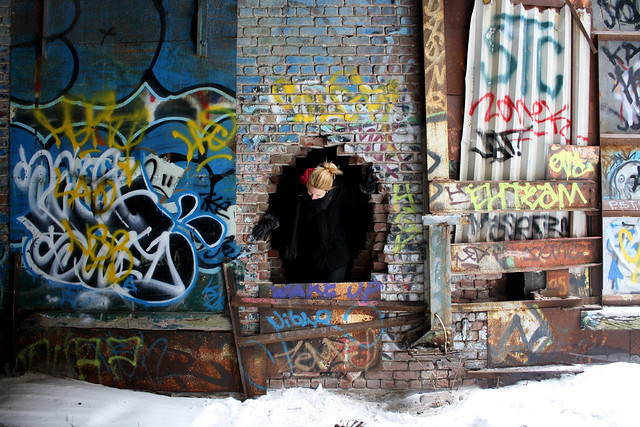
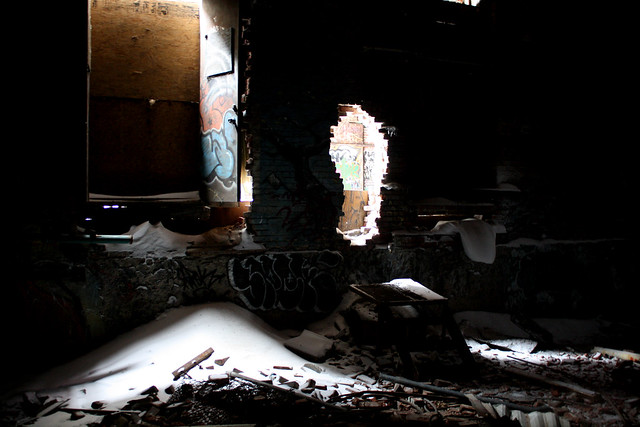

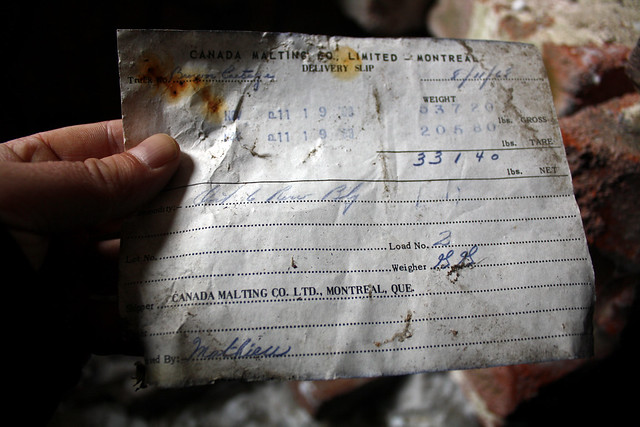


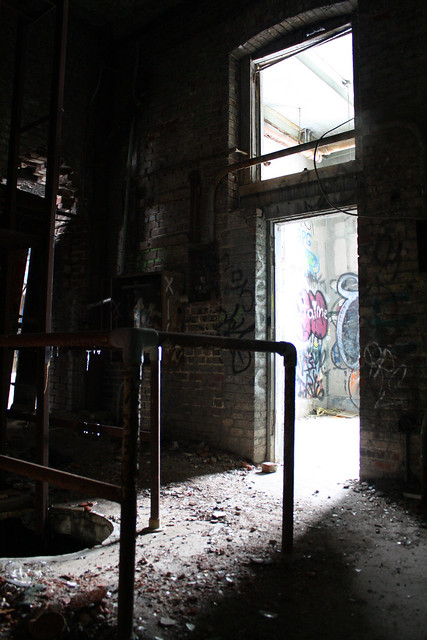
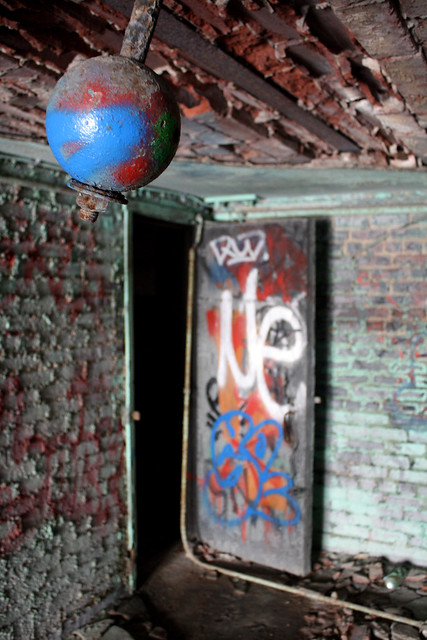

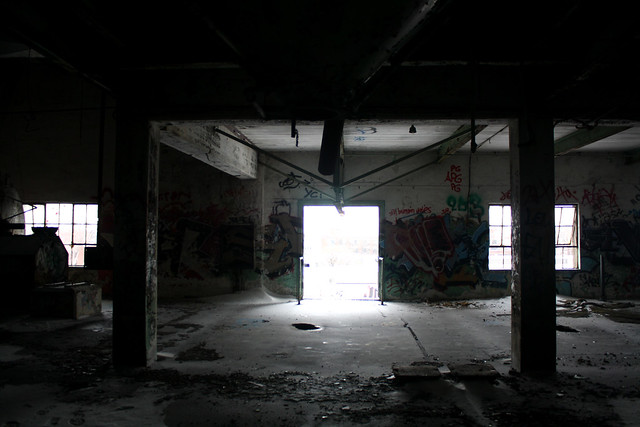


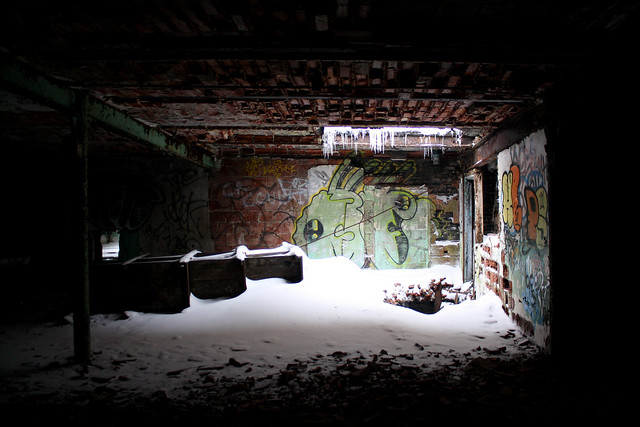

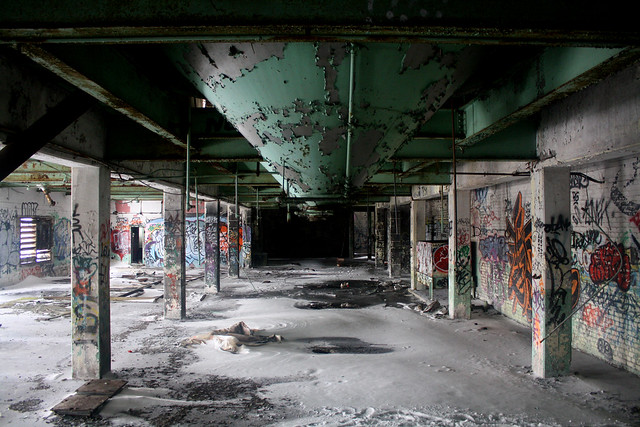

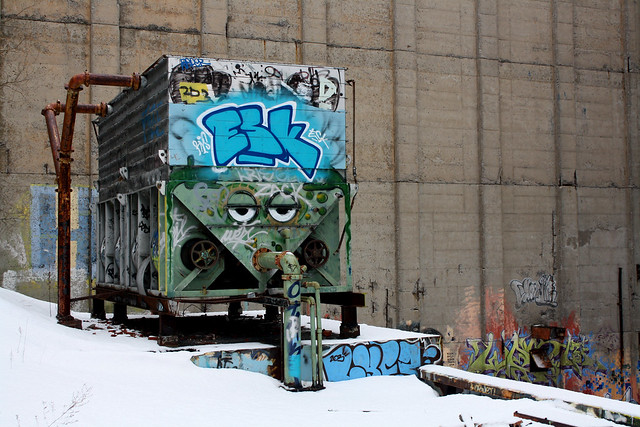

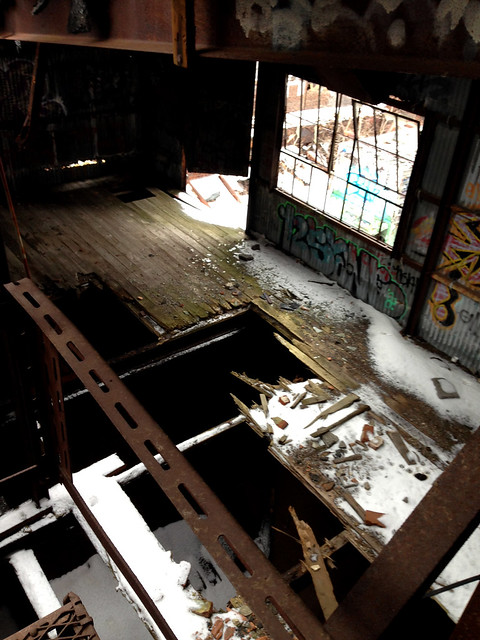
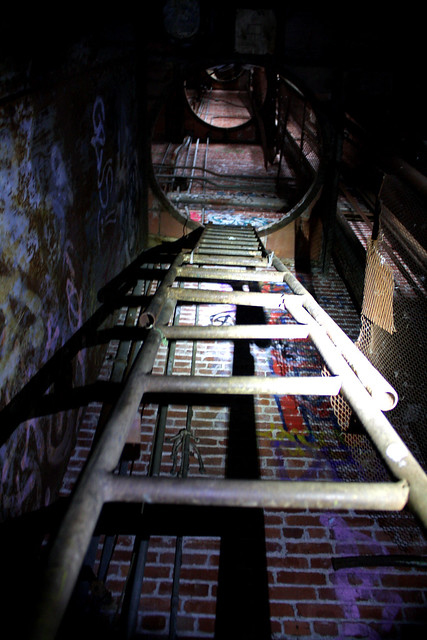
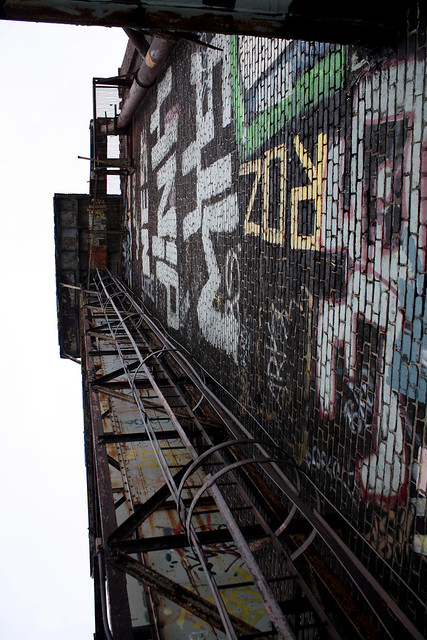

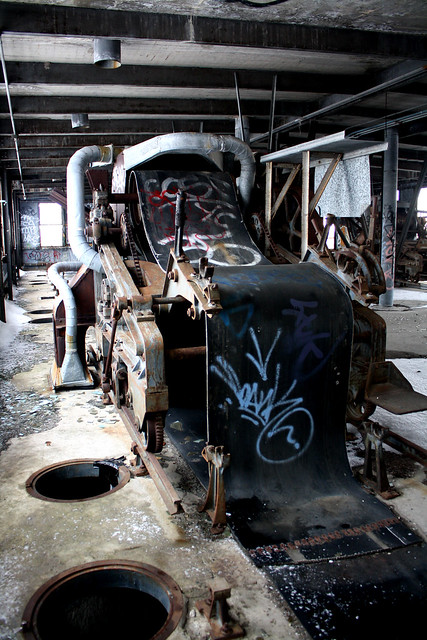

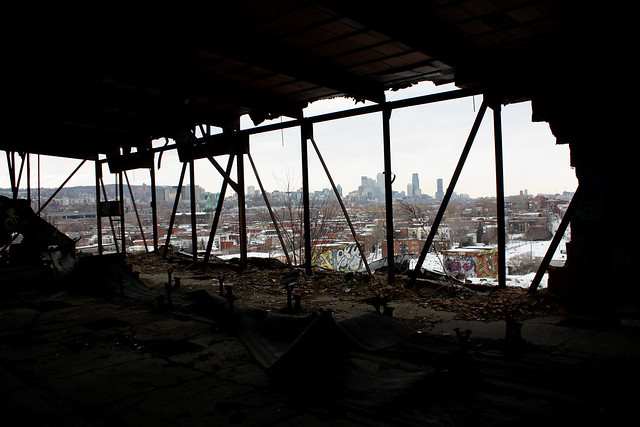

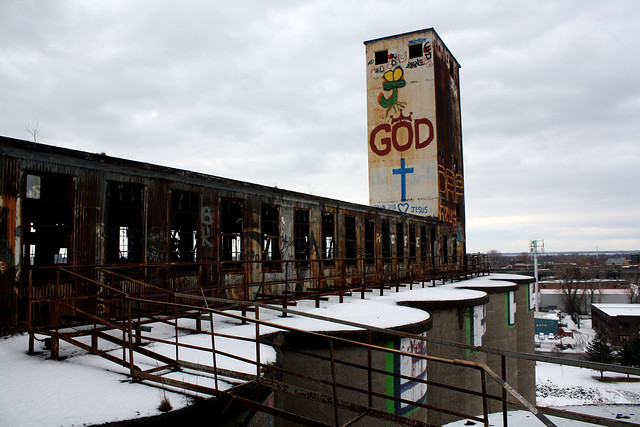
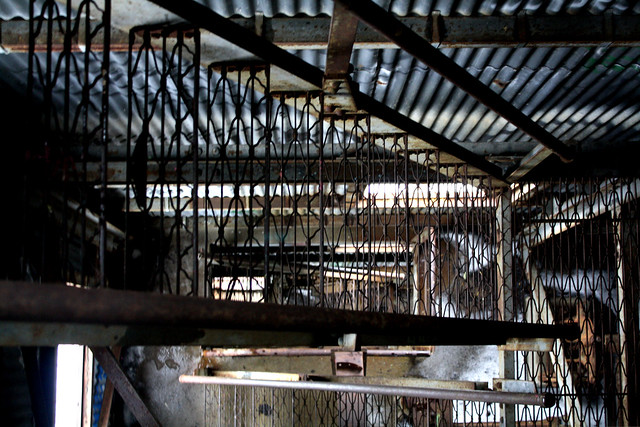


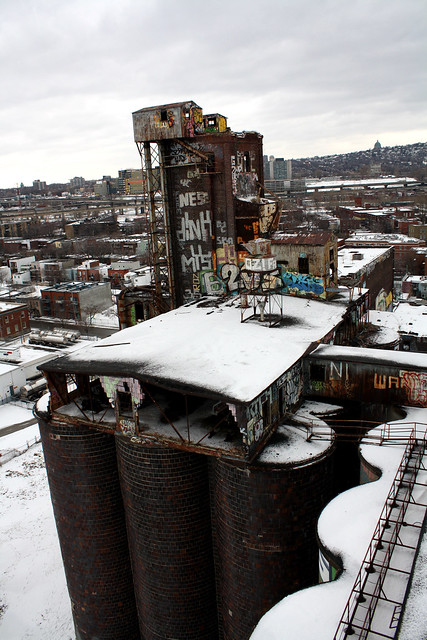

4 comments:
Great write up Ninj. I'm glad your trip was successful.
I've been trying for a long time to get in the Malting Co. and always failed to find an entrance. Could you help me with this, or perhaps even better help me get in touch with your guide Nel58? I would really appreciate!
A few years back I had the pleasure of exploring this building. It's really was amazing and your pictures brought back many memories.
Hey did you ever fund tour way in. I'm very interested in finding a way in.
Post a Comment